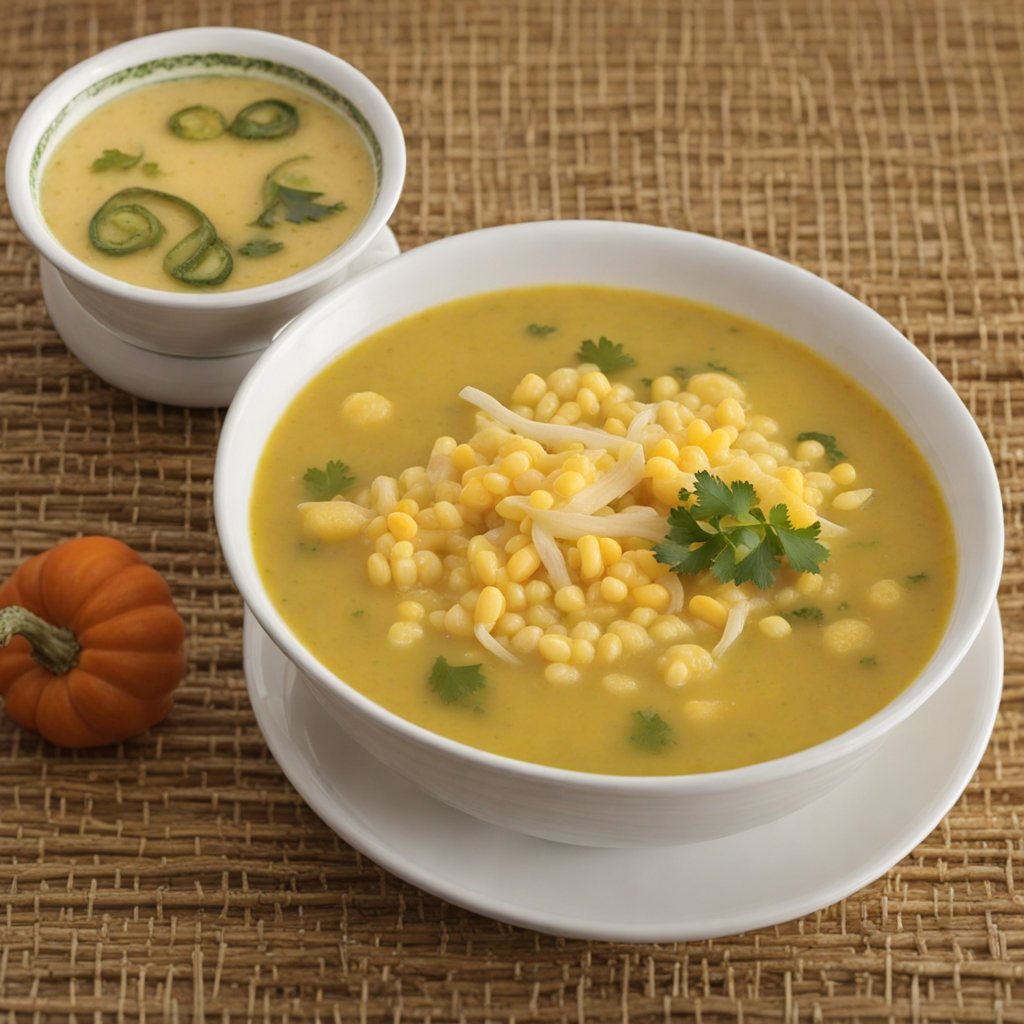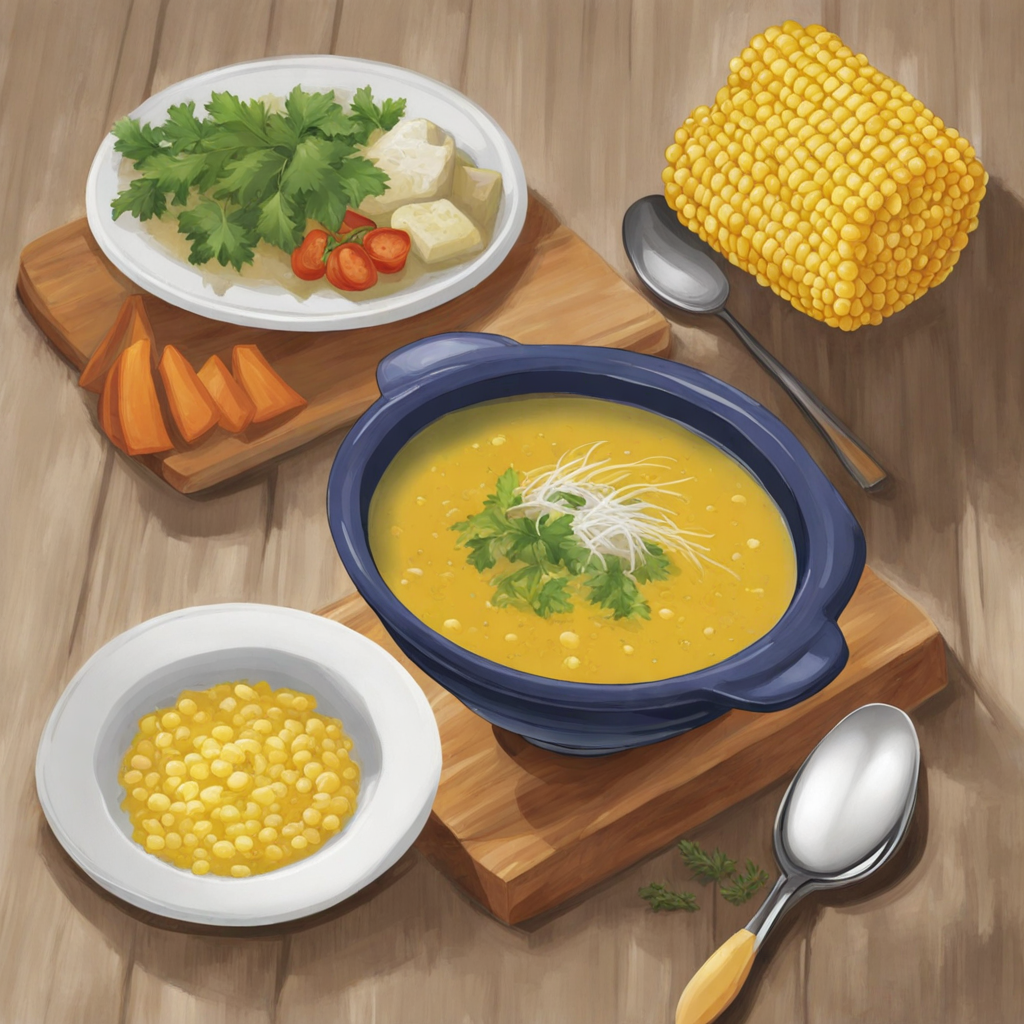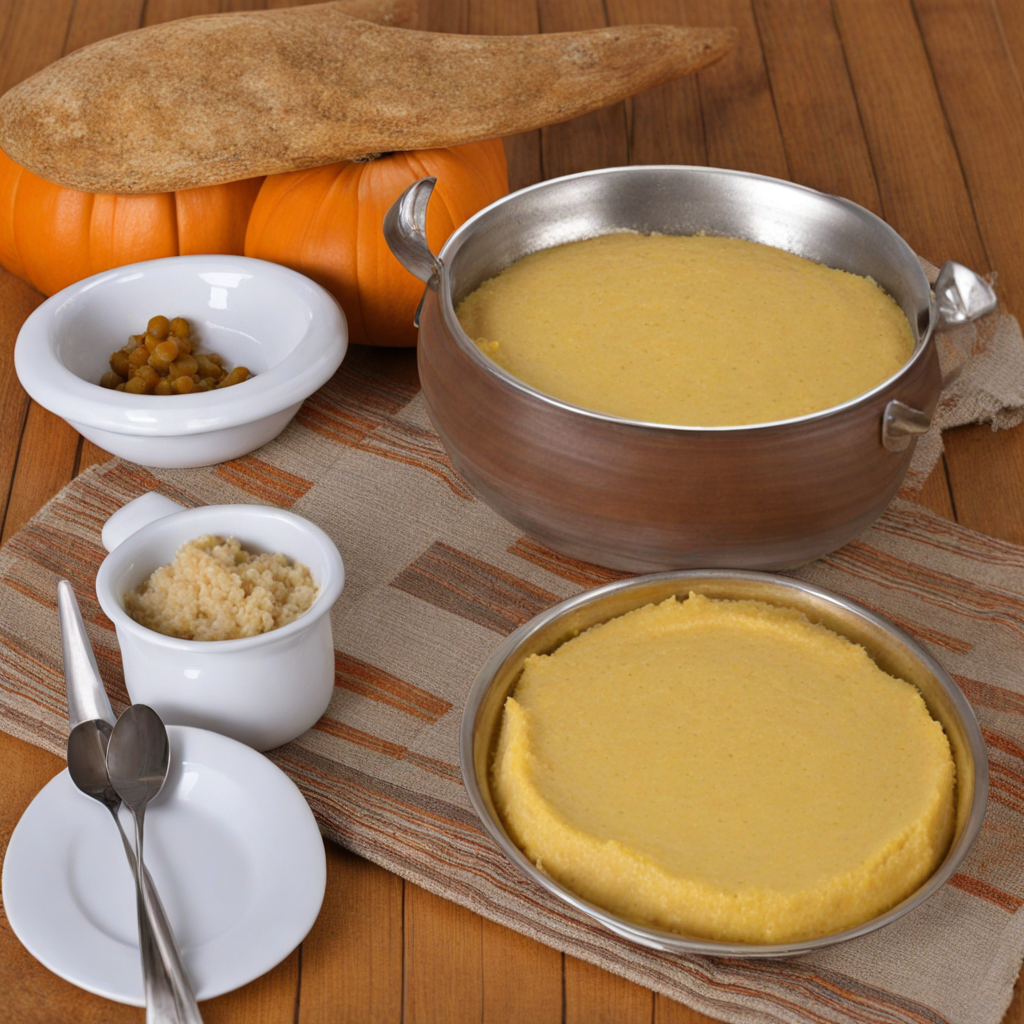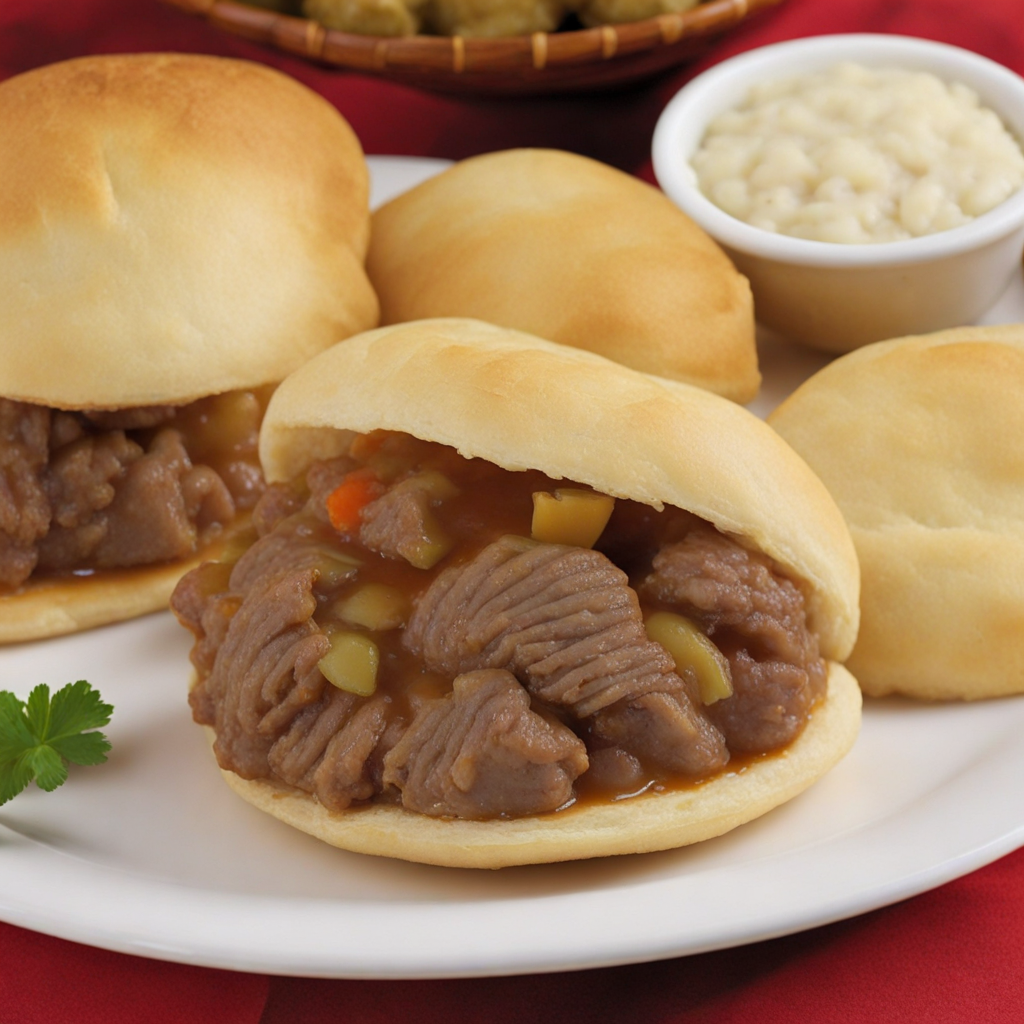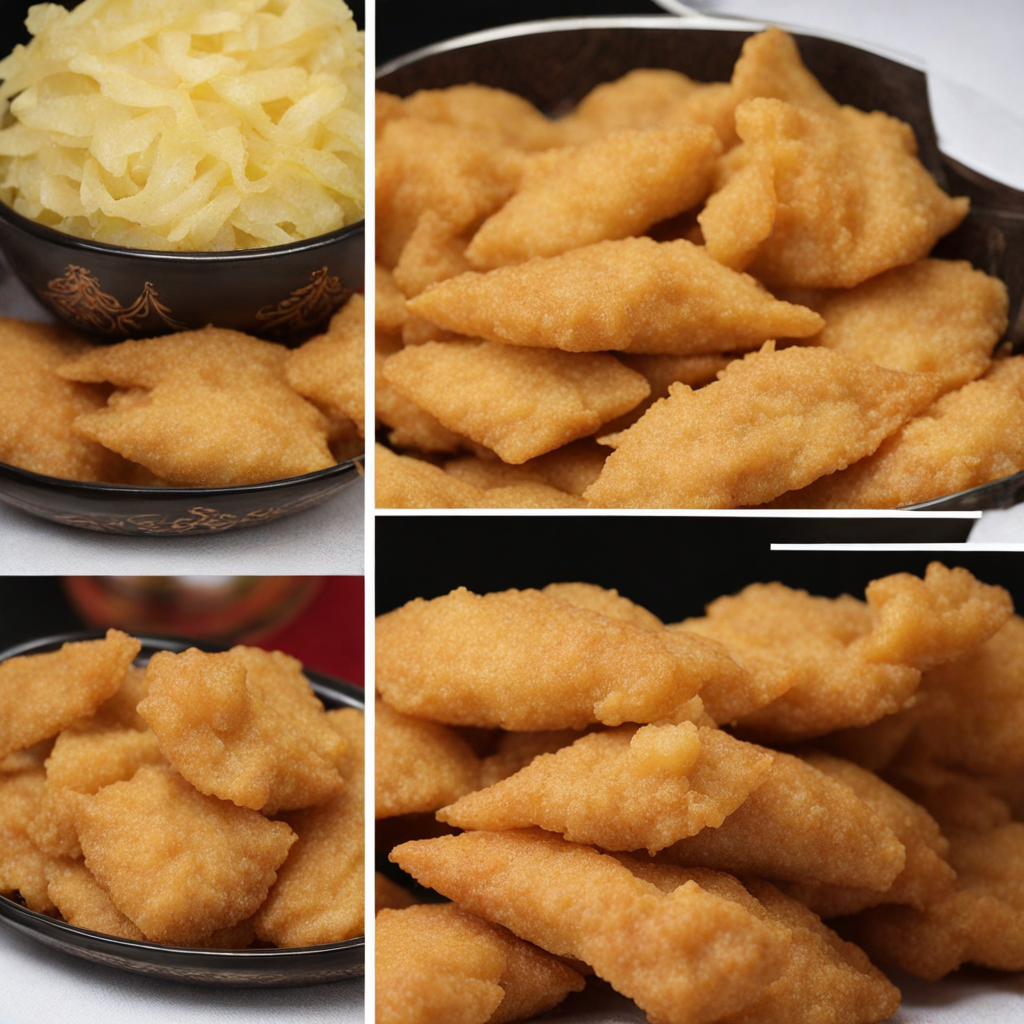Kurapepe
Kurapepe is a delightful traditional dish from Paraguay that beautifully showcases the country's culinary heritage. It primarily consists of a unique blend of corn, which is ground into a fine flour, and combined with fresh cheese, eggs, and a hint of salt. The mixture is then shaped into small cakes and baked to perfection, resulting in a golden-brown exterior that encases a soft, cheesy interior. The texture is reminiscent of cornbread but with a distinctly Paraguayan twist, making it an exciting option for anyone eager to explore new flavors. The flavor profile of Kurapepe is truly captivating. The natural sweetness of the corn flour complements the rich, creamy taste of the cheese, while the eggs add a lovely richness that binds the ingredients together. Each bite offers a warm, comforting experience, often enhanced by the addition of herbs or spices, depending on regional variations. Some locals enjoy Kurapepe with a side of spicy sauce or a fresh salad, which adds an extra layer of flavor and texture, making it a versatile dish suitable for any meal of the day. Traditionally served during family gatherings or festivals, Kurapepe not only satisfies the palate but also brings people together, reflecting the communal spirit of Paraguayan culture. Whether enjoyed as a snack or a main dish, it invites you to savor the simplicity and authenticity of local ingredients. For those looking to expand their culinary horizons, Kurapepe is a must-try, offering a genuine taste of Paraguay's rich gastronomic landscape.
How It Became This Dish
Kurapepe: A Culinary Treasure of Paraguay Origin and Historical Context Kurapepe, a traditional food from Paraguay, embodies the rich tapestry of the nation’s history and culture. Its origins can be traced back to the indigenous Guaraní people, who inhabited the region long before European colonization. The Guaraní were skilled agriculturalists, cultivating a variety of crops including corn, cassava, and a range of fruits and vegetables. They utilized these resources to create a diverse diet, and in this context, Kurapepe emerged as a staple dish. The name "Kurapepe" is derived from the Guaraní language, which translates to "little foot" or "little leg," possibly referring to the shape of the dumplings or the way they are served. Traditionally, Kurapepe is made from corn flour, which was a significant crop for the Guaraní and remains a staple in Paraguayan cuisine. The dish reflects the indigenous techniques of food preparation, emphasizing the use of local ingredients and traditional cooking methods. The arrival of Spanish colonizers in the 16th century introduced new ingredients and culinary practices, which significantly influenced Paraguayan cuisine. The fusion of indigenous and European cooking styles led to the development of Kurapepe, as new techniques, such as frying, were integrated into traditional recipes. Furthermore, the incorporation of meats, particularly beef and pork, which became prevalent in the diet due to Spanish livestock farming, added depth and richness to the dish. Cultural Significance Kurapepe holds a special place in Paraguayan culture. It is often served during communal gatherings, celebrations, and family meals, symbolizing unity and shared heritage. In rural communities, where the preparation of food is often a communal activity, making Kurapepe becomes a social event. Families come together to prepare the dough, fill the dumplings, and cook them, fostering a sense of community and belonging. The dish is typically enjoyed with a variety of accompaniments, including a spicy sauce made from peppers and tomatoes, which enhances its flavors and reflects the bold taste profile of Paraguayan cuisine. Additionally, it is often paired with mate, a traditional herbal tea that represents hospitality and social bonding in Paraguay. In religious and cultural festivals, Kurapepe can be seen as a symbol of abundance and gratitude. It is often included in feasts during important celebrations, such as Independence Day and the feast days of local saints. This further cements its status as a dish that transcends mere sustenance, embodying the spirit of Paraguayan identity and heritage. Development Over Time As Paraguay has evolved, so too has Kurapepe. The dish has undergone various transformations, adapting to changes in society and culinary trends. In urban areas, Kurapepe has been modernized, with chefs experimenting with different fillings and cooking methods. While traditional recipes remain popular, contemporary interpretations have emerged, incorporating ingredients such as cheese, vegetables, and even gourmet touches like truffle oil. This evolution reflects broader trends in Paraguayan cuisine, where traditional dishes are being reimagined and elevated in fine dining contexts. As Paraguay embraces its culinary heritage, chefs are taking pride in showcasing traditional foods like Kurapepe, presenting them in innovative ways that appeal to both local and international palates. Moreover, with the rise of global food movements and a growing interest in indigenous and sustainable food practices, Kurapepe has gained recognition beyond Paraguay's borders. Food enthusiasts and cultural ambassadors are sharing the dish through culinary festivals, social media, and cooking classes, introducing it to a global audience. This has sparked interest in traditional Paraguayan cuisine as a whole, with Kurapepe at the forefront. Regional Variations and Modern Interpretations While Kurapepe is a beloved national dish, regional variations exist that reflect local culinary traditions. In the eastern regions of Paraguay, where corn is abundant, Kurapepe may be made with a coarser corn flour, resulting in a heartier texture. In contrast, urban areas may focus on more refined versions, utilizing higher-quality ingredients and modern plating techniques. Modern interpretations of Kurapepe often include innovative fillings, such as sautéed mushrooms, spiced meats, or local cheeses, showcasing the versatility of the dish. Chefs have also begun to explore health-conscious adaptations, creating gluten-free versions using alternative flours or incorporating more vegetables into the filling. These variations not only cater to changing dietary preferences but also highlight the adaptability of traditional foods in a contemporary context. Conclusion: A Culinary Legacy Kurapepe is more than just a dish; it is a reflection of Paraguay’s rich cultural heritage, a testament to the resilience and creativity of its people. From its indigenous roots to its modern interpretations, Kurapepe encapsulates the story of a nation that honors its past while embracing the future. As Paraguay continues to navigate the complexities of globalization and culinary fusion, Kurapepe stands as a symbol of identity and tradition. It invites both locals and visitors alike to savor not only its flavors but also the history and cultural narratives woven into every bite. In this way, Kurapepe is not just food; it is a living tradition, a connection to the land, and a celebration of Paraguayan culture that will endure for generations to come.
You may like
Discover local flavors from Paraguay


